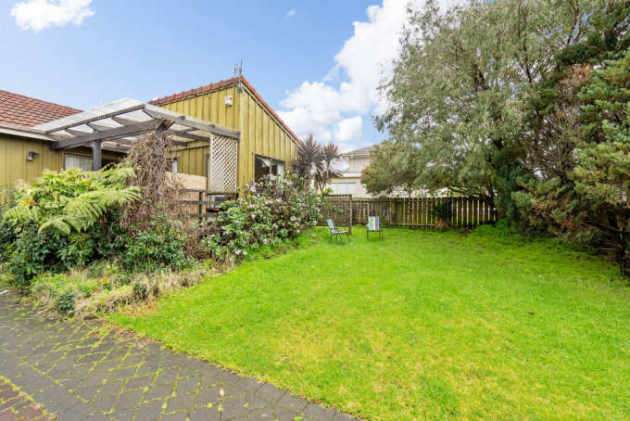Only eight bidders were in the auction room at Ray White Manukau’s offices on Wednesday, mostly to watch. not to buy. Of the six properties on the slate that afternoon, one sold under the hammer, another sold during a pause in proceedings and a third had been picked up the night before after the vendor accepted a pre-auction offer.
The brisque and business-like atmosphere was a far cry from the excitement and desperation seen in the same room the year before, when crowds spilled out into the hallway and properties sold for big sums.
Ray White Manukau’s weekly auctions are viewed by many as a bellwether of the wider market mood in South Auckland. The sale prices achieved on Wednesday indicate the market has well and truly changed and the heat of last year has cooled.
A three-bedroom deceased estate in tidy, original condition on Antsy Place, Mangere sold under the hammer for $740,000, 40% less than its $1.225m ratings valuation, despite five bidders competing. A three-bedroom house in Belleek Close, Weymouth, sold for an undisclosed sum after bidding paused at $715,000. It had a CV of $900,000.
Start your property search
Ray White Manukau's co-owner, Tom Rawson, told OneRoof: “Looking back, the weirdness of 2021 is visible now. It was like a speed bump in a straight road.
“You’d never expect 20 people to register for a property, like you did then, that’s crazy. It should be two or three [registered bidders], that’s really normal.”
In the frenzy of last year at one July auction, 200 people packed the room and 119 bidders registered to buy 11 properties.

After bidding paused at $715,000, a three-bedroom house at Belleek Close, Weymouth sold for an undisclosed sum. Photo / Supplied
“We had our $1 reserve house selling that day, it was a feeding frenzy,” Rawson said. That house, in Landette Road, Manurewa, sold for $600,000 - $70,000 above its 2017 CV.
He pointed to winter 2020, just as the market was drawing breath after Covid lockdown, as normal. Then the company did just five auctions in the whole of July, seven in August. Last year that ballooned to 26 in July and 27 in August. By the last week of October, as the market frenzy reached its peak, the office did that many auctions – 28 – in one day. Six lots passed in, 22 sold.
“Our biggest ever day was 30 auctions in the last week of November, 14 passed in. It was mostly development lots and by then the market had passed its peak,” Rawson said.
“In last year’s feeding frenzy, people would chuck their house on the market and go ‘let’s see what we get’. Now people have a genuine reason to sell, and they’re selling at this year’s prices.”
Rawson said vendors are still ahead, with a house that would have fetched $800,000 in 2020 then peaking in October last year at $1.3m now settling back to $850,000.
“That’s still 8% up. It might not be 40% any more, but you’re buying in the same market,” he said.

As the market peaked in July 2021, a house in Manurewa with a reserve of $1 attracted 40 bidders and sold for $600,000. Photo / Supplied
Most of this week’s properties were investor properties.
And while most of the action was from people bidding by phone via an agent, a handful of professional traders were in the room to get a sense of the market.
“We’ve not got FOMO, it’s fear of over-paying. They want to see if house X sells for $800,000, so they’re confident paying $800,000 for the next one,” Rawson said.
Ray White auctioneer Sam Steele said that while the majority of buyers were heading back in person to the auction rooms, investors had embraced the new technology.
“It’s common for them to bid on the phone, as they might be looking at several properties in an afternoon and it’s just logistics.
“They have a relationship with the agent bidding on the phone, they’ll be telling them what’s happening in the room – that's the real bonus of technology.”
Steele said that pausing auctions to go into negotiations was a sign of the times.
“Last year maybe two out of 10 auctions would pause, now it’s more like seven or eight out of 10.
“But last year was just an extraordinary market, we’re very unlikely to encounter that again. People have forgotten what a normal market is like, that craziness was never going to last. ”
He said that some savvy buyers were invoking a little-known clause in the auction contract when they go into a back room to negotiate. They’ll make a price offer that includes a stipulation that the vendor pulls the property from the auction and the price is not announced.
Steele still prefers taking the ‘on the market’ price back to the auction room to produce more bids.
He added that vendors have well and truly caught up with the reality of the market.
“Back in March, vendors had appraisals from the end of last year, and were still expecting that price. Now in June, enough time has passed, people who have genuine reasons to sell and move, they know what the market has done,” he said.



















































































